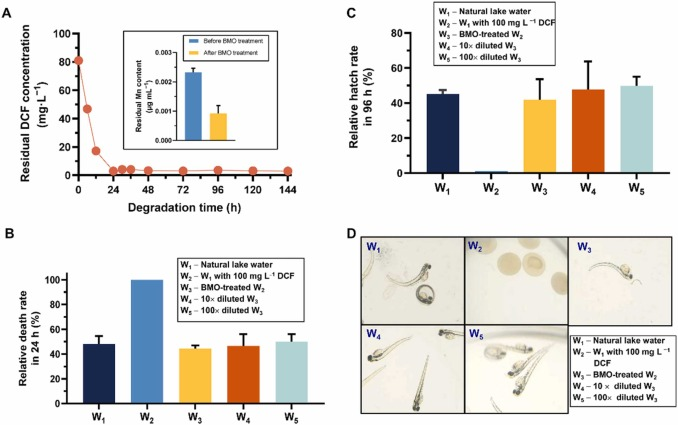Complete oxidative degradation of diclofenac via coupling free radicals and oxygenases of a micro/nanostructured biogenic Mn oxide composite from engineered Pseudomonas sp. MB04R-2
Author:Yongxuan Liu,Jiaoqing Li,Jie Zeng,Xun Yu,Xiaowen Sun,Zhicheng Zhou,Jingjing Xu,Liangzheng Xu and Lin Li
Journal of Hazardous Materials, 2023 August 15, Vol 456
Abstract: Oxidative degradation can effectively degrade aromatic emerging contaminants (ECs). However, the degradability of lone inorganic/biogenic oxides or oxidases is typically limited when treating polycyclic ECs. Herein, we report a dual-dynamic oxidative system comprising engineered Pseudomonas and biogenic Mn oxides (BMO), which completely degrades diclofenac (DCF), a representative halogen-containing polycyclic EC. Correspondingly, recombinant Pseudomonas sp. MB04R-2 was constructed via gene deletion and chromosomal insertion of a heterologous multicopper oxidase cotA, allowing for enhanced Mn(II)-oxidizing activity and rapid formation of the BMO aggregate complex. Additionally, we characterized it as a micro/nanostructured ramsdellite (MnO2) composite using multiple-phase composition and fine structure analyses. Furthermore, using real-time quantitative polymerase chain reaction, gene knockout, and expression complementation of oxygenase genes, we demonstrated the central and associative roles of intracellular oxygenases and cytogenic/BMO-derived free radicals (FRs) in degrading DCF and determined the effects of FR excitation and quenching on the DCF degradation efficiency. Finally, after identifying the degraded intermediates of 2H-labeled DCF, we constructed the DCF metabolic pathway. In addition, we evaluated the degradation and detoxification effects of the BMO composite on DCF-containing urban lake water and on biotoxicity in zebrafish embryos. Based on our findings, we proposed a mechanism for oxidative degradation of DCF by associative oxygenases and FRs.
Full article:https://doi.org/10.1016/j.jhazmat.2023.131657
